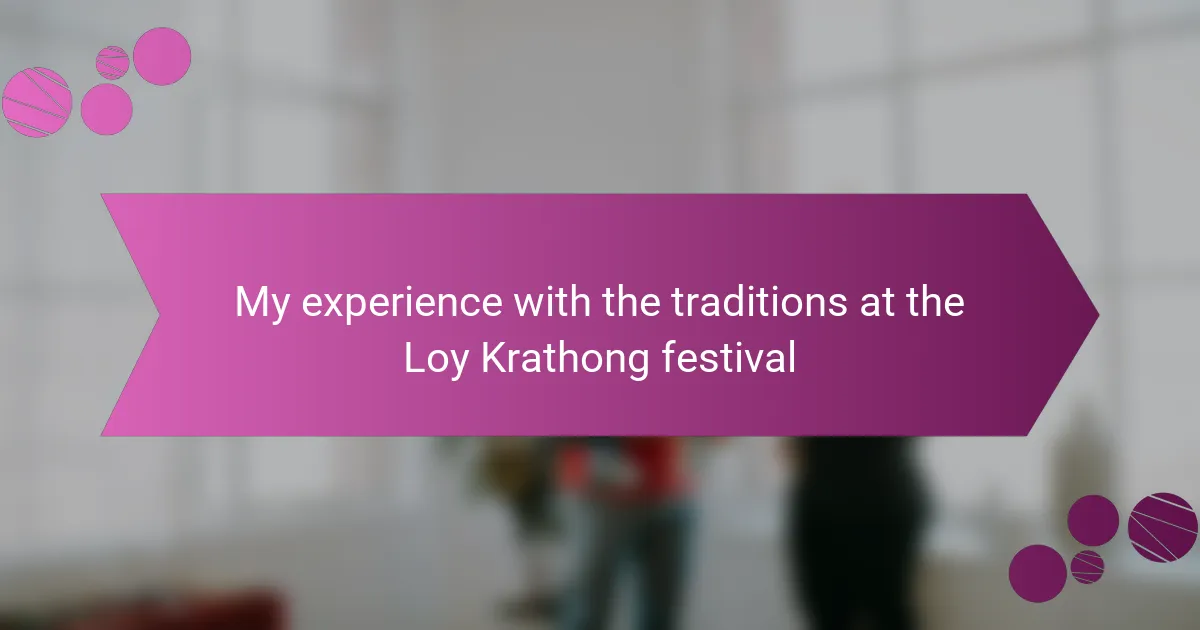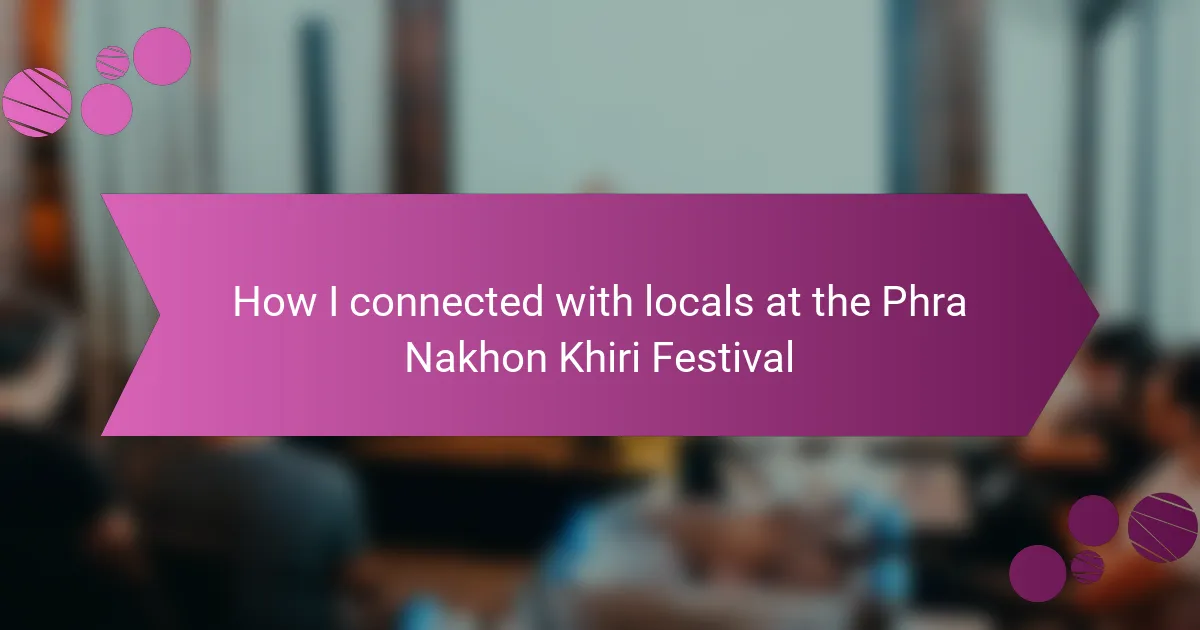Key takeaways
- Thai music festivals showcase a blend of traditional instruments and performances, fostering a sense of community and cultural celebration.
- Culinary experiences at festivals serve as a bridge for connection, with food sparking conversations and friendships.
- Engaging in traditional dances and music creates a shared joy that transcends language and background, uniting diverse audiences.
- The Naga Festival highlights vibrant artistic expressions that emphasize cultural heritage and community spirit through dance and music.

Understanding Thai Music Festivals
Thai music festivals are a vibrant tapestry of sounds, traditions, and culture that reflect the heart and soul of Thailand. I remember my first experience at a festival in Chiang Mai; the welcoming atmosphere and the rhythm of traditional instruments struck a chord deep within me. Each performance seemed to tell a story, connecting me to the rich history and diverse influences of Thai music.
The beauty of Thai music festivals lies not just in the performances themselves, but in the surrounding culture and community. The energy is infectious, as locals and travelers come together to celebrate. Often, I find myself captivated by the lively crowds dancing to the beats, creating a shared experience that transcends language.
- Traditional Thai music includes various genres like Luk Thung (country) and Mor Lam (from the northeast).
- Instruments such as the khaen (a bamboo mouth organ) and ranat (a xylophone-like instrument) are central to performances.
- Festivals often feature food stalls, showcasing the country’s culinary delights, enhancing the overall experience.
- Dancers in traditional attire add a rich visual element, performing skilled movements that narrate historical tales.
- Attendees often unite in communal singing and dancing, fostering a sense of belonging and joy among diverse audiences.
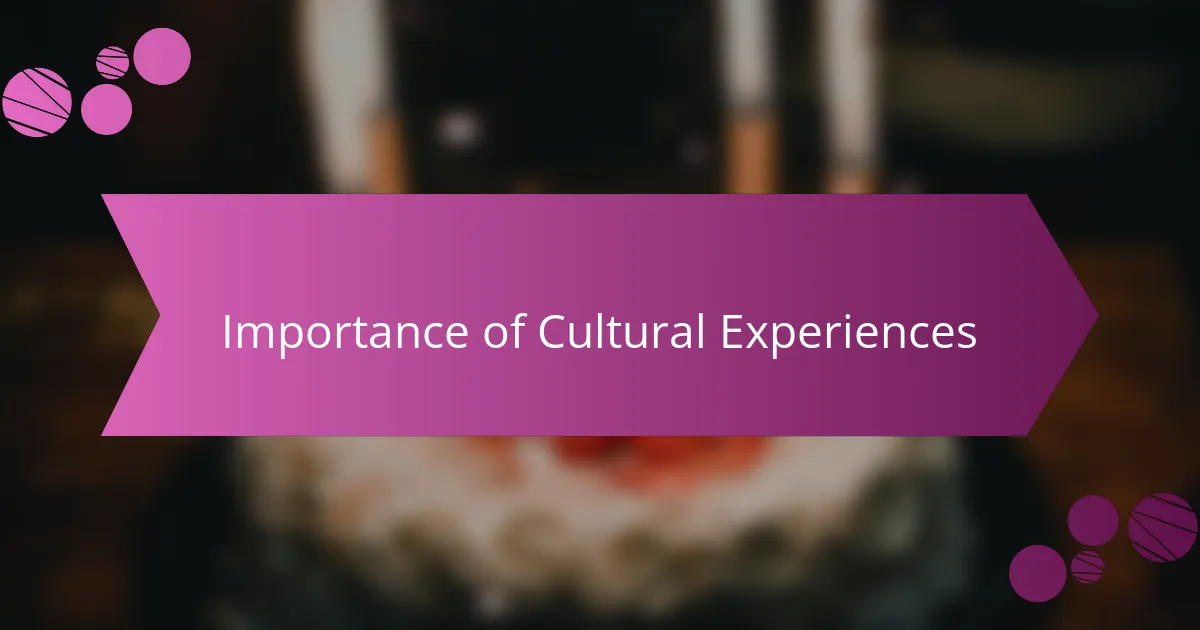
Importance of Cultural Experiences
Cultural experiences are fundamental in broadening our understanding of the world. When I attended the Naga Festival, I was struck by how deeply the local traditions resonated within me. It made me wonder, how often do we immerse ourselves in cultures that challenge our perspectives and enrich our lives?
Participating in these cultural gatherings also fosters a sense of connection. I vividly recall joining a group of dancers, their movements telling stories of the past while the crowd cheered us on. In those moments, I felt like a part of something larger—a vibrant community that transcended boundaries and embraced diversity through shared joy.
Moreover, the culinary delights at festivals provide an essential window into cultural identities. As I tasted flavorful dishes unique to the Naga culture, it struck me how food can serve as a bridge between people. Isn’t it fascinating how a simple meal can spark conversations and forge connections that last well beyond the event itself?

Highlights of the Naga Festival
The Naga Festival is a feast for the senses, overflowing with vibrant displays of traditional dance and music. One highlight that remains etched in my memory is the mesmerizing performance of local artists donning colorful attire, each movement steeped in rich symbolism. As I watched them dance, I couldn’t help but feel a connection to centuries of cultural heritage—a reminder of the stories we all carry through generations.
Food is another essential highlight that made my experience unforgettable. I still recall the tantalizing aroma that wafted through the festival grounds, drawing me to stalls bursting with local delicacies. Sampling dishes like smoked meat and fermented bamboo shoot curry, I was profoundly moved by how each flavor represented a piece of the Naga identity. How can something as simple as food evoke such powerful emotions and connections?
Perhaps the most powerful moments came during the communal celebrations. Engaging with festival-goers through dance and song created a palpable sense of unity and joy among us. There was a particular point when I joined in, surrounded by people of all ages, singing traditional tunes together. It was a beautiful moment that made me wonder: isn’t it incredible how music and dance can turn strangers into friends, even if just for a fleeting moment?
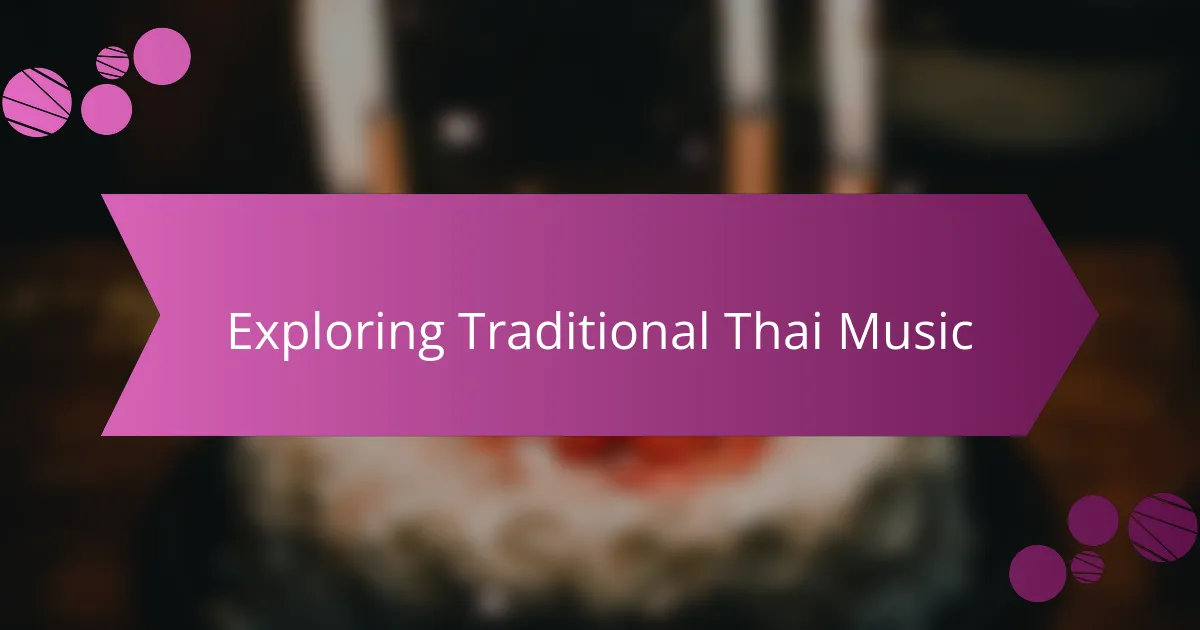
Exploring Traditional Thai Music
Thai music is an exquisite blend of rhythms and melodies that paints the cultural landscape of Thailand. I still remember the first time I heard the khaen, a bamboo mouth organ, resonating through the air. Its haunting notes seemed to pull at my heartstrings, inviting me to reflect on the stories embedded in each traditional tune. Isn’t it amazing how a single instrument can encapsulate a spectrum of emotions?
Attending festivals, I’ve marveled at performances featuring the ranat, a xylophone-like instrument that produces such lively sounds. Watching skilled musicians play with intricate rhythms, I felt completely transported. It made me think about how these instruments not only entertain but also carry historical significance, connecting the present with the past in a beautiful musical dialogue.
The communal atmosphere at Thai music festivals is captivating. I recall joining in on a group dance, my body moving instinctively to the infectious beats while surrounded by new friends. This shared experience transformed strangers into a united celebration of joy and culture. How often do we get the chance to connect with others through the universal language of music? It’s moments like these that remind me of the power of traditional music to forge bonds and create lasting memories.
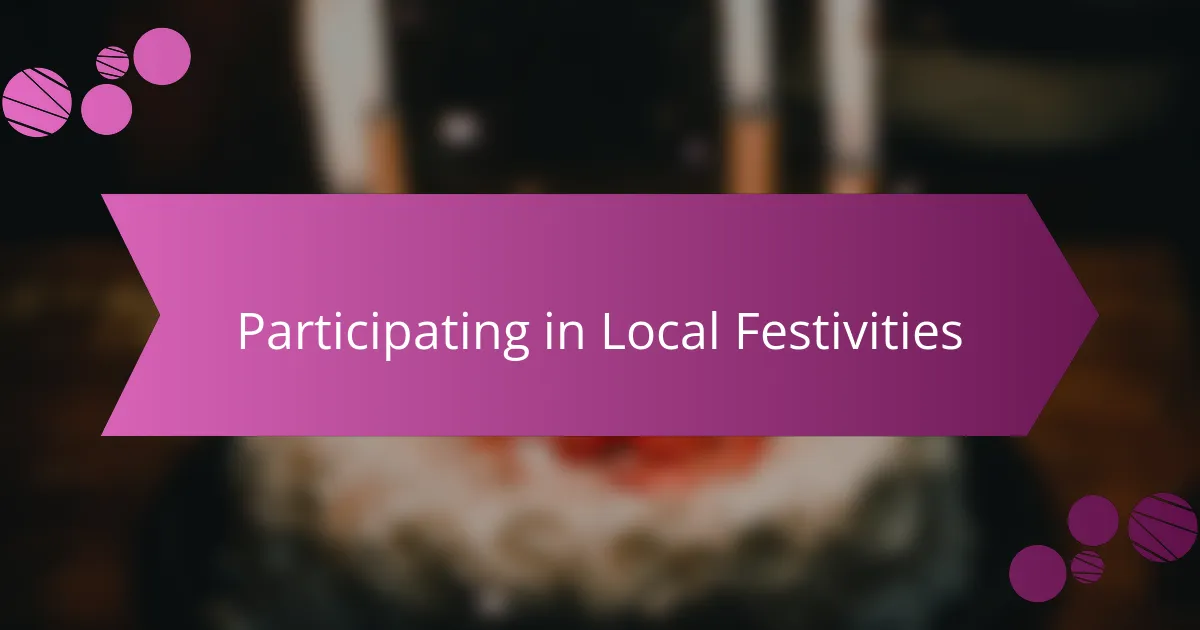
Participating in Local Festivities
Participating in local festivities during the Naga Festival was an enriching experience that I’ll always cherish. I remember immersing myself in the vibrant atmosphere while joining the locals for traditional dances. The joy in their faces was contagious, and I felt a sense of belonging, as if we were all part of one big family celebrating our shared culture. Have you ever felt so connected to a community that it brought tears to your eyes?
One of my favorite moments was when I stepped into a circle of dancers, trying to mimic their graceful movements. It was both exhilarating and humbling, as I stumbled at times, yet was encouraged by shouts of support from the crowd around me. In those moments, the differences in language and background melted away, replaced by a beautiful understanding that we were all there to honor our heritage together.
The food stalls at the festival added another layer to my experience. I had the chance to share local delicacies with fellow festival-goers, each bite a celebration of Naga culture. The spontaneous laughter and stories exchanged over meals made me realize how food truly brings people together. Isn’t it remarkable how a single dish can spark conversations that build friendships?

Personal Memories from the Naga Festival
One of my fondest memories from the Naga Festival was the moment I joined in the traditional dance. The energy was palpable, and I felt a sense of connection with the performers and the spectators alike. It reminded me of the vibrant community spirit I often see at Thai music festivals, where rhythm and movement bridge cultural gaps.
Another unforgettable experience was savoring the unique flavors of Naga cuisine. There’s something truly special about sharing a meal with new friends, exchanging stories and laughter over dishes that carry centuries of tradition. In that moment, I felt like part of a family, much like I do when enjoying street food at a Thai festival, bursting with flavors and life.
I was particularly struck by the artistic expressions showcased at the festival. From elaborate traditional costumes to mesmerizing musical performances, it was a reminder of the rich heritage in both Naga culture and Thai traditions. The creativity on display evokes a sense of pride and joy, reinforcing our shared human experience through art.
| Aspect | Naga Festival | Thai Music Festival |
|---|---|---|
| Traditional Dance | Community participation, vibrant energy | Inspiring unity, rhythmic diversity |
| Culinary Experience | Unique Naga dishes, shared with friends | Street food variety, flavors that bring people together |
| Artistic Expression | Rich heritage displayed through costumes and performances | Celebration of cultural diversity through music and art |


